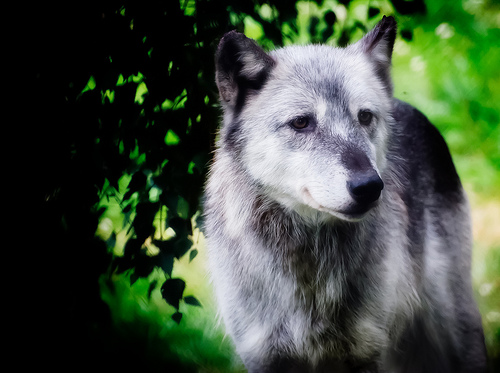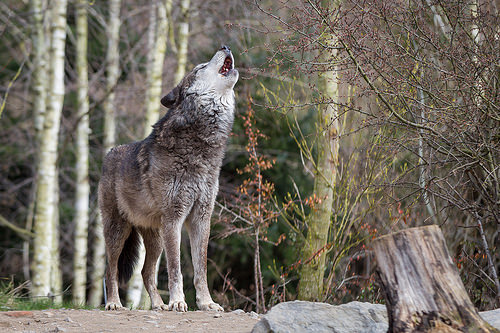Gray Wolf Legal Notes and A Photo
Canidian Timber Wolf (Gray Wolf)

Image by Richard Clark (Digimist)
Wolves’ heads are large and heavy, with wide foreheads, strong jaws and long, blunt muzzles. The ears are relatively small and triangular. Wolves usually carry their heads at the same level as their backs, raising their heads only when alert. The teeth are heavy and large, being better suited to bone crushing than those of other extant canids, though not as specialised as those found in hyenas. The canine teeth are robust and relatively short (26 mm). The animal can develop a crushing pressure of perhaps 1,500 lbf/in2 compared to 750 lbf/in2 for a German shepherd. This force is sufficient to break open most bones, as well as cut through half inch lassos with one snap.
Oregon lawmakers support removing gray wolf from endangered list
The Oregon Fish and Wildlife Commission delisted the wolf in November by recommendation of state biologists, who said the species is no longer in danger of extinction in the majority of the state. Three environmentalists sued, asking for an impartial …
Read more on kgw.com
County Site Considered For Gray Wolf Reintroduction
12, 2014, filed against the USFWS by a group of conservation and environmental protection advocates “for repeated failures over the last 38 years to develop a valid recovery plan for the imperiled Mexican gray wolf, one of the most endangered mammals …
Read more on AzJournal.com
